AA Print Studio
Wayne Daly & Zak Kyes
The AA Print Studio operates within the Architectural Association, London’s oldest independent school of architecture and host to an ambitious programme of exhibitions, events and publications. The Print Studio was established in 1971/72 as part of the Communications Unit directed by Denis Crompton and initiated by AA chairman Alvin Boyarsky in an attempt to organically shape the school’s architectural discourse through the production and distribution of publications. An early snapshot pictures members of the Communications Unit holding portable black-and-white televisions with their own images looped back upon the curved surface of the cathode ray tube; as if to forecast the increasingly screen-based nature of graphic design. With a certain prescience, the immaterial, hypothetical nature of many architectural proposals from this period found their most logical expression not in built but book form. Over the past thirty years the Print Studio’s small team of editors and graphic designers have often worked independent of clear disciplinary boundaries and in close collaboration with architects, writers and artists.
Our selection for the ‘Forms of Inquiry Reading Room’ emerges from our involvement, as both graphic designers and readers, in the production of books, magazines and printed matter as an alternative platform for architectural and discursive projects. Indeed, this selection of publications attempts to enliven (and pry open the bounds) of what could constitute independent and architectural publishing, with particular emphasis on local concerns. Given the ever-serious and obdurate world of mainstream architecture publishing, it might only be the interloper who is best able to provide insight. Our selection of publications from practitioners including artists, furniture makers, musicians, typographers, and writers, often working collaboratively, do as good a job as any to unravel the possible activities of a small publisher in 2007.
This collaborative spirit and unifying concern for production have enabled almost all of the contributions to the Reading Room to express their ideas in printed form. Some take up these issue as their subject, such as Put About, a survey of independent publishing, while others, like Tourettes, Umbrella, Frozen Tears and Starship, express this largely through the economy of their form and collaborative methodology. In bypassing either the expensive lithographic process or the division of labour essential to mass-market publishing, many of these publishers put themselves in a closer relationship with the content itself.
An early example is Sniffin’ Glue, a punk ’zine started by Mark Perry in 1976 which took the form of a cheap cut-and-paste leaflet. The immediacy of its publication is shared by the spirit of other ‘little magazines’ making use of similar formats to disseminate radical agendas concerned with architectural education. Included here as facsimiles are the broadsheet Ghost Dance Times and Street Farmer, a ‘manual of alternate urbanism’ both published by students at the Architectural Association in the early 1970s. The intermittent and short-lived nature of these publications was fundamental to their existence, often disappearing as quickly as they emerged.
As its title suggests, disappearance plays a key role in the Invisible University, first proposed by David Greene in 1971 as a decentralised school distributed globally via L.A.W.U.N: Locally Available World Unseen Networks. In parallel to these experiments, the AA distributed its ‘official’ journal AA Quarterly (1968–82), edited by Dennis Sharpe. An investment in design pedagogy also underpins The Continuous Present, a laser-printed, hand-assembled book from the Jan van Eyck Academie’s Tomorrow Book research programme (led by Will Holder) which takes up similar questions related to the future of book production by making use of appropriate technology and materials.
The practises of these independent initiates, often one-man-bands drawing upon a network of participants, are shared by the London-based publishers Hyphen Press and Book Works. While varying in scope, both continue to publish (and re-publish) important work with little regard to conventional disciplinary boundaries. Models & Constructs, published by Hyphen Press, documents the resolutely ‘modern’ life and work of Norman Potter, a designer, cabinetmaker and poet who pioneered a refusal to acknowledge divisions between typography, architecture, and other allied disciplines. This expanded realm of design and its connection to the built world is also the subject of Counterprint by Karel Martens and Unjustified Texts by Robin Kinross.
Apart from being home to the assembly of publishers/ designers discussed here, London also provides the context for interpretations of particularly British architectural forms. Stephen Willats’ Control magazine, established in 1965, has focused on the social and selforganisational systems created within brutalist tower blocks. While Control makes use of conceptual models and diagrams, Erasmus is Late by artist Liam Gillick uses the narrative form to create a derive-like traverse through the city’s politically charged architectural spaces.
Each of our contributions to the ‘Forms of Inquiry Reading Room’, in this way, substantiate a set of textual and material approaches that move nimbly across disciplines, demonstrating the considerable intersections between graphic, type, print and architectural cultures.
-
-
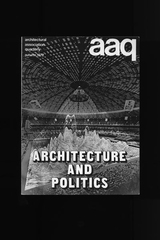
-
AAQ Vol 4 No. 4
Architecural Association, edited by Dennis Sharp, cover designed by Chris Norman, 1972
-
-
-
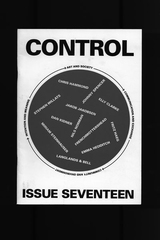
-
Control issue 17
edited by Stephen Willats, designed by Chris Tosic, 2007
-
-
-
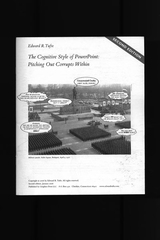
-
Edward Tufte, The Cognitive Style of Powerpoint: Pitching Out Corrupts Within
Graphics Press, designed by Edward Tufte, ISBN 0-9613921-6-9, 2006
www.edwardtufte.com
-
-
-
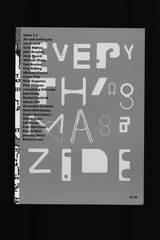
-
Everything Magazine issue 3.4, 4.1 and 4.2
Everything Publications, edited by Lucy Eyers, Steve Rushton and John Timberlake, designed by Stuart Bailey and Ruth Blacksell, covers designed by Paul Elliman, ISSN 1361 7699, 2001/02
-
-
-
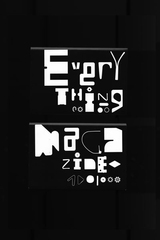
-
Everything Magazine issue 3.4, 4.1 and 4.2
Everything Publications, edited by Lucy Eyers, Steve Rushton and John Timberlake, designed by Stuart Bailey and Ruth Blacksell, covers designed by Paul Elliman, ISSN 1361 7699, 2001/02
-
-
-

-
Frozen Tears
ARTicle Press, edited by John Russell, cover design by John Russell, book design by Ruth Blacksell, ISBN 1-873352-68-9, 2003
-
-
-
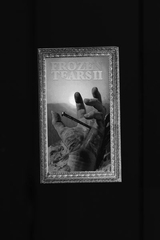
-
Frozen Tears 2
ARTicle Press, edited by John Russell, cover design by John Russell, book design by Ruth Blacksell, ISBN 1-873352-88-3, 2004
-
-
-
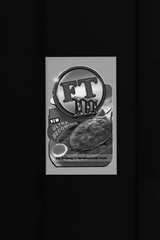
-
Frozen Tears 3
ARTicle Press, edited by John Russell, cover design by John Russell, book design by Jaakko Tuomivaara/o-sb Design, ISBN 1-873352-59-X, 2007
www.frozentears.co.uk
-
-
-
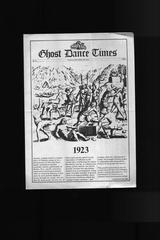
-
Ghost Dance Times No. 4
Architecural Association, edited by Martin Pawley, designed by Giles Marking, 1974
-
-
-
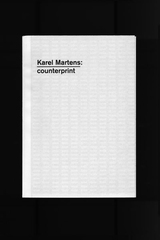
-
Karel Martens, Counterprint
Hyphen Press, designed by Hans Gremmen with Karel Martens, ISBN 0-907259-25-1, 2004
www.hyphenpress.co.uk
-
-
-
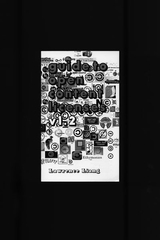
-
Lawrence Liang, Guide To Open Content Licenses V1.2
Piet Zwart Institute, edited by Florian Cramer, Matthew Fuller, Paul Keller, Calum Selkirk, designed by Femke Snelting, June 2005
-
-
-
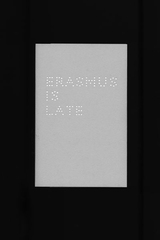
-
Liam Gillick, Erasmus is Late
Book Works, designed by Grita ven der Bend/Rose-Innes Associates, ISBN 1-870669-17-3, 2000
www.bookworks.org.uk
-
-
-
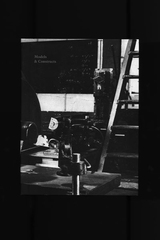
-
Norman Potter, Models & Constructs
Hyphen Press, ISBN 0-907259-04-9, 1990
www.hyphenpress.co.uk
-
-
-
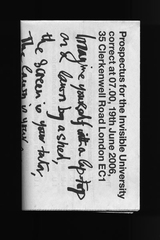
-
Prospectus for the Invisible University
EXP, edited by David Greene and Samantha Hardingham, designed by John Morgan Studio, 2006
s.hardingham@westminster.ac.uk
-
-
-
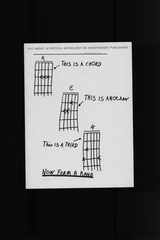
-
Put About: A Critical Anthology on Independent Publishing
Book Works, edited by Maria Fusco with Ian Hunt, designed by Stuart Bailey, ISBN 1-870699-70-X, 2004
www.bookworks.org.uk
-
-
-
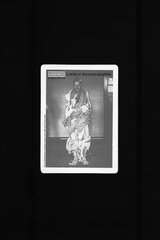
-
Sandwich Autumn 2001 and Autumn 2004
SecMo Projects, edited by Simon Josebury, designed by Secondary Modern, ISSN 1475-5947 2001
www.secmo.dircon.co.uk
-
-
-
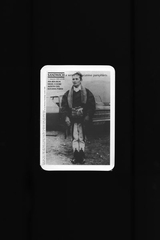
-
Sandwich Autumn 2001 and Autumn 2004, SecMo Projects
edited by Simon Josebury, designed by Secondary Modern, ISSN 1475-5947 2001
www.secmo.dircon.co.uk
-
-
-
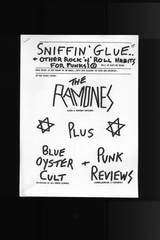
-
Sniffin’ Glue Issue 1
edited and designed by Mark Perry, July 1976
-
-
-
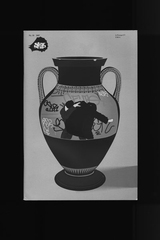
-
Starship No. 10
edited by Hans-Christian Dany, Martin Ebner, Ariane Müller and Vera Tollman, designed by Starship/Müller, itf Grafik Design, ISSN 1619-2052, 2007
www.starship-magazine.org
-
-
-

-
Street Farmer 1 and 2
Architecural Association, edited by Peter Crump and Bruce Haggart, 1971/72
-
-
-
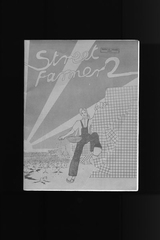
-
Street Farmer 1 and 2
Architecural Association, edited by Peter Crump and Bruce Haggart, 1971/72
-
-
-
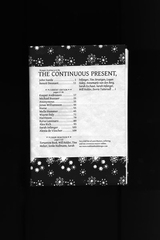
-
The Continuous Present
Jan van Eyck Academie, edited and designed by the Tomorrow Book studio and contributors, 2006
-
-
-

-
Tourette’s 1 and III
edited and designed by Will Stuart, 2003/06
-
-
-
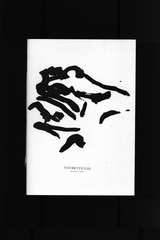
-
Tourette’s 1 and III
edited and designed by Will Stuart, 2003/06
-
-
-
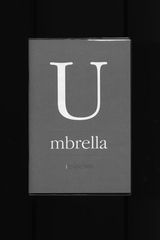
-
Umbrella
edited by Simon Josebury, designed by Secondary Modern, 2007
www.openumbrella.info
-
-
-
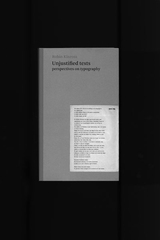
-
Unjustified Texts: Perspectives on Typography
Hyphen Press, edited by Robin Kinross, designed by Françoise Berserik, ISBN 0-907259-17-0, 2002
www.hyphenpress.co.uk
-